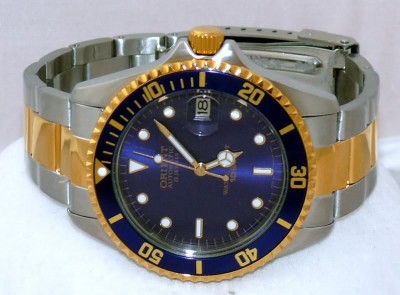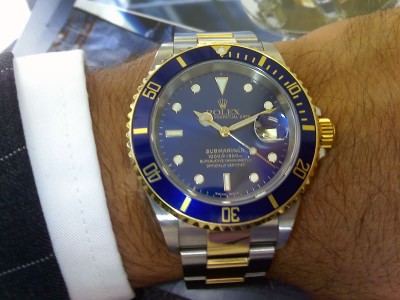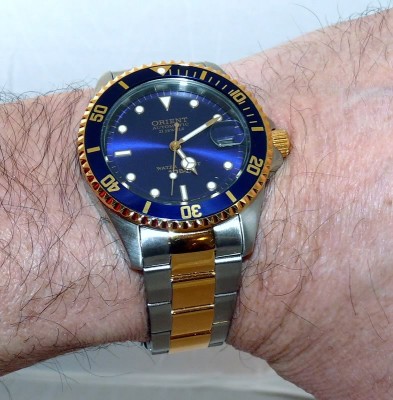Came across this article about Rolex movements:
THE ROLEX EXPLORER
REF. 14270
by Walt Odets
 Among the watches in Rolex’s current production, the Oyster Perpetual Explorer (Ref. 14270, but known popularly as “The Explorer 1”) stands in the lower-middle segment of the stainless steel line: a COSC certified center-seconds caliber 3000, without date, retailing for approximately $2,500. The Explorer is also, perhaps, the most historically connected model in the line, deriving from a long line of very similar Explorer designs. The watch is supplied in a 36 millimeter steel “Oyster” case, with an attached steel “Flip Lock” Oyster bracelet. The case is approximately 11.5 millimeters thick.
Among the watches in Rolex’s current production, the Oyster Perpetual Explorer (Ref. 14270, but known popularly as “The Explorer 1”) stands in the lower-middle segment of the stainless steel line: a COSC certified center-seconds caliber 3000, without date, retailing for approximately $2,500. The Explorer is also, perhaps, the most historically connected model in the line, deriving from a long line of very similar Explorer designs. The watch is supplied in a 36 millimeter steel “Oyster” case, with an attached steel “Flip Lock” Oyster bracelet. The case is approximately 11.5 millimeters thick.
THE DIAL AND CASE
 The relatively simple three piece case (bezel, band, and back) is clearly strong and rigid. (Rigidity is an important issue in maintaining water-resistance in use that involves impact that can distort the alignment of the case.) While the bezel and band sides (which are integral with the strap lugs) are polished, the upper horizontal surface of band and lugs is brushed. The brushing shows a slight unevenness on the case band, especially between the lugs and should be more consistent in a watch of this cost. The polished sides of the case, however, are an unusual, peculiarly appealing double-horn shape characteristic of many Rolexes, and are sumptuously polished so that the metal has almost the luster of white gold (right). The uncoated sapphire crystal, as can be seen, is set largely outside the bezel. The internal surfaces and backs of the lugs are not as well finished as the top and side surfaces, and even with the bracelet in place, the inside lower lug edges and tips are uncomfortably sharp (below left).
The relatively simple three piece case (bezel, band, and back) is clearly strong and rigid. (Rigidity is an important issue in maintaining water-resistance in use that involves impact that can distort the alignment of the case.) While the bezel and band sides (which are integral with the strap lugs) are polished, the upper horizontal surface of band and lugs is brushed. The brushing shows a slight unevenness on the case band, especially between the lugs and should be more consistent in a watch of this cost. The polished sides of the case, however, are an unusual, peculiarly appealing double-horn shape characteristic of many Rolexes, and are sumptuously polished so that the metal has almost the luster of white gold (right). The uncoated sapphire crystal, as can be seen, is set largely outside the bezel. The internal surfaces and backs of the lugs are not as well finished as the top and side surfaces, and even with the bracelet in place, the inside lower lug edges and tips are uncomfortably sharp (below left).  They should be slightly radiused to eliminate this unpleasant feel. The completely unadorned back is nicely brushed, and shows the familiar Rolex serrated wrench ring (yellow arrow, left).
They should be slightly radiused to eliminate this unpleasant feel. The completely unadorned back is nicely brushed, and shows the familiar Rolex serrated wrench ring (yellow arrow, left).
This back design requires a special bit that matches the serrations on the back. The Bergeon bit for the Rolex (#5, 29.5 millimeters) is shown below right. The Rolex system is perhaps the finest screwed back design in production. Used properly, it allows removal–and reattachment–of even the tightest backs without the slightest visible mark left on the watch. Most designs–with holes, slots, or hexagonal protrusions–are nearly impossible to use without some visible evidence left behind. To be properly used, however, the Rolex wrench and back must be perfectly parallel and stable, and this generally requires a true case opener, rather than a hand wrench. The Bergeon 5700 opener, as shown below left, clamps the watch firmly in a horizontal position between two rigid nylon
slots, or hexagonal protrusions–are nearly impossible to use without some visible evidence left behind. To be properly used, however, the Rolex wrench and back must be perfectly parallel and stable, and this generally requires a true case opener, rather than a hand wrench. The Bergeon 5700 opener, as shown below left, clamps the watch firmly in a horizontal position between two rigid nylon  blocks and allows the bit to be lowered onto the watch in perfect alignment. It is a shame that other manufacturers do not use similar designs. The design does not, however, lend itself to the use of hand wrenches with the watch improperly supported. The many scratched Rolex backs that watchmakers report are undoubtedly due to the use of unstable and poorly-aligned hand wrenches.
blocks and allows the bit to be lowered onto the watch in perfect alignment. It is a shame that other manufacturers do not use similar designs. The design does not, however, lend itself to the use of hand wrenches with the watch improperly supported. The many scratched Rolex backs that watchmakers report are undoubtedly due to the use of unstable and poorly-aligned hand wrenches.
THE DIAL
The black enameled dial of the Explorer is elaborated with a painted white minute track, white gold bar markets filled with tritium, and white gold Arabic numerals at three, six, and nine. The tritium-filled hands are also made in white gold. To my tastes, the markers and hands are oversized and give the dial a cramped and busy appearance. The flat, uncoated sapphire also causes strong reflections that add to the difficulty in easily reading the time. Taste aside, the dial and hands are detailed, extremely well made, and immaculately finished. I would imagine that, together, they represent a significant portion of the manufacturing costs of this watch.
To my tastes, the markers and hands are oversized and give the dial a cramped and busy appearance. The flat, uncoated sapphire also causes strong reflections that add to the difficulty in easily reading the time. Taste aside, the dial and hands are detailed, extremely well made, and immaculately finished. I would imagine that, together, they represent a significant portion of the manufacturing costs of this watch.
THE BRACELET
 For a watch that it is in some ways about its steel bracelet, it is remarkable that this bracelet looks so much like an after-thought. The beautiful case shape and lugs–which were clearly originally designed for use with a strap–are visually almost completely destroyed by the bracelet. Furthermore, the bracelet is not only unintegrated with the watch aesthetically, but physically as well. It is attached to the lugs with standard springs bars (as if it were a strap), and an “insert” is placed between bracelet and case to fill
For a watch that it is in some ways about its steel bracelet, it is remarkable that this bracelet looks so much like an after-thought. The beautiful case shape and lugs–which were clearly originally designed for use with a strap–are visually almost completely destroyed by the bracelet. Furthermore, the bracelet is not only unintegrated with the watch aesthetically, but physically as well. It is attached to the lugs with standard springs bars (as if it were a strap), and an “insert” is placed between bracelet and case to fill the space between the two. The insert hangs on the spring bar; two awkward (and exposed) tabs behind the lugs stabilize it. Despite the insert having a single purpose–to fill the space between the lugs–it does so very crudely, following neither the contour of the case, nor the lugs. The design and fit is as awkward and unattractive as anything I recall seeing on a production watch. The clasp for the bracelet is comprised of stamped steel pieces that feel cheap, and seem obviously inappropriate in a watch of this cost.
the space between the two. The insert hangs on the spring bar; two awkward (and exposed) tabs behind the lugs stabilize it. Despite the insert having a single purpose–to fill the space between the lugs–it does so very crudely, following neither the contour of the case, nor the lugs. The design and fit is as awkward and unattractive as anything I recall seeing on a production watch. The clasp for the bracelet is comprised of stamped steel pieces that feel cheap, and seem obviously inappropriate in a watch of this cost.
THE MOVEMENT
 The Explorer houses a Rolex caliber 3000, a 12.5 ligne (28.5 millimeter) 5.8 millimeter thick, 27 jewel, 28,8000 BPH automatic. Although the movement is largely conventional in design, there are a few unusual design features.
The Explorer houses a Rolex caliber 3000, a 12.5 ligne (28.5 millimeter) 5.8 millimeter thick, 27 jewel, 28,8000 BPH automatic. Although the movement is largely conventional in design, there are a few unusual design features.
The bidirectional automatic winding system is similar to the ETA/Eterna system in using a pair of double-click wheels for winding reverse. (For an explanation of how this system works, see the Horologium article “Anatomy of an $85 Watch: The Swatch Automatic.”) The two “red” wheels appear to be fabricated of a light alloy, and are coated with PTFE (“Teflon”) for lubrication of the outer teeth and inner clicks . Shown right,  the upper PTFE-coated wheel can be seen inverted at the blue arrow, the inner-lower wheel at the yellow arrow. (The red arrow indicates the transmission wheel for hand winding.) Because both upper wheels rotate continuously during movement of the winding rotor in such a double click wheel system, the large size of the wheels may have dictated the light alloy to reduce their mass and thus improve winding efficiency. The alloy is probably also quieter in operation that steel parts would be. I do not know whether the PTFE coating provides the durability that conventionally lubricated steel parts would offer. The automatic winding system is the single best-finished part of the movement.
the upper PTFE-coated wheel can be seen inverted at the blue arrow, the inner-lower wheel at the yellow arrow. (The red arrow indicates the transmission wheel for hand winding.) Because both upper wheels rotate continuously during movement of the winding rotor in such a double click wheel system, the large size of the wheels may have dictated the light alloy to reduce their mass and thus improve winding efficiency. The alloy is probably also quieter in operation that steel parts would be. I do not know whether the PTFE coating provides the durability that conventionally lubricated steel parts would offer. The automatic winding system is the single best-finished part of the movement.
 A clever, efficient and cost-saving design solution is also seen in the mounting of the winding rotor shaft, illustrated at left. The top of third wheel jewel has an oddly shaped recess that supports the bottom pivot of the rotor shaft. Thus, a single jewel supports the third wheel from above and the rotor from below. A possible shortcoming in this arrangement might be that a significant shock to the watch would cause the considerable mass of the rotor to displace the friction-fit jewel and disturb the third wheel pinion end-play. The rotor shaft is secured to its mounting in the automatic winding bridge only by a circlip, and shows considerable side-play in operating position. I am told by
A clever, efficient and cost-saving design solution is also seen in the mounting of the winding rotor shaft, illustrated at left. The top of third wheel jewel has an oddly shaped recess that supports the bottom pivot of the rotor shaft. Thus, a single jewel supports the third wheel from above and the rotor from below. A possible shortcoming in this arrangement might be that a significant shock to the watch would cause the considerable mass of the rotor to displace the friction-fit jewel and disturb the third wheel pinion end-play. The rotor shaft is secured to its mounting in the automatic winding bridge only by a circlip, and shows considerable side-play in operating position. I am told by  Rolex service people that this is a not uncommon source of trouble in the otherwise sturdy winding system. The simplicity and over-sized design of the automatic winding system characterizes the entire caliber 3000. The well-finished rotor, inverted and attached to the winding bridge, is shown at right.
Rolex service people that this is a not uncommon source of trouble in the otherwise sturdy winding system. The simplicity and over-sized design of the automatic winding system characterizes the entire caliber 3000. The well-finished rotor, inverted and attached to the winding bridge, is shown at right.
The only other unusual design feature of the caliber 3000 is the use of a flat (i.e. without overcoil) hairspring without a regulator and an extremely simple version of an adjustable-mass balance, illustrated below left. The green arrow indicates one of the four screws used to provide adjustment of the center of mass of the balance and thus control the rate of the watch. What at first appears to be a regulator (yellow arrow) is, in fact, simply a movable balance spring stud to allow easy adjustment of beat. The Glucydur balance with four screws–called a Microstella balance by Rolex– provides an  extremely simple solution to rate regulation that is also, undoubtedly, less expensive than a conventional regulator. By contrast, the conceptually similar Gyromax balance of Patek Philippe is a refined and expensive system with eight top-mounted rotating, slotted weights. Both systems offer the advantage of not introducing the adjustment complications of a regulator; but both also make simple rate adjustments a more complex and time-consuming task. The Patek system, however, makes screwdriver access (to rotate the weights) from above an easy matter. The Rolex system relies on rotation of the serrated screw heads from the side, presumably with a screwdriver blade, unless the balance is removed from the watch (in which case a special “star” wrench could be used). Judging by the significant damage on all four screws (due to adjustment at the factory), this is not an easy task, at least if it is to be accomplished without damage. (Enough metal had been gouged from the screw heads in this movement that balance poise may well have been affected, damage that would not necessarily appear in the timing figures, but might make future timing adjustments more difficult.) This photograph also illustrates the KIF shock protection for the escape wheel (blue arrow).
extremely simple solution to rate regulation that is also, undoubtedly, less expensive than a conventional regulator. By contrast, the conceptually similar Gyromax balance of Patek Philippe is a refined and expensive system with eight top-mounted rotating, slotted weights. Both systems offer the advantage of not introducing the adjustment complications of a regulator; but both also make simple rate adjustments a more complex and time-consuming task. The Patek system, however, makes screwdriver access (to rotate the weights) from above an easy matter. The Rolex system relies on rotation of the serrated screw heads from the side, presumably with a screwdriver blade, unless the balance is removed from the watch (in which case a special “star” wrench could be used). Judging by the significant damage on all four screws (due to adjustment at the factory), this is not an easy task, at least if it is to be accomplished without damage. (Enough metal had been gouged from the screw heads in this movement that balance poise may well have been affected, damage that would not necessarily appear in the timing figures, but might make future timing adjustments more difficult.) This photograph also illustrates the KIF shock protection for the escape wheel (blue arrow).
PERFORMANCE
On the electronic timer the Explorer showed excellent performance, in a class with many top-notch watches. In the adjusted five positions it showed a daily variation of three seconds per day between the fastest and slowest positions (plus one second crown left and crown up; minus two seconds dial up and dial down). A five second variation on this parameter is a widely accepted standard for high quality, fully adjusted watches. Dial up and dial down readings were virtually identical in terms of rate, beat, and amplitude (a good measure of the condition of balance pivots and vertical centering, or flatness, of the balance spring). The unadjusted position, crown right, was well within the parameters of the adjusted positions at minus two seconds. In daily use, the watch turned in a good, if not outstanding, performance, losing about three to five seconds in various measured 24-hour periods.
 Assuming a lift angle of 52 degrees (Rolex Service in New York would not supply me with this figure which cannot be readily determined from the watch itself), the amplitude was more than adequate, though not exceptional: 294 degrees in horizontal positions, and 244 to 259 in the various vertical positions. Very fine, well-serviced watches usually provide 310 degrees or better in horizontal positions, 260 or better in vertical positions. Amplitude is a measure of the total efficiency of the movement, and good amplitude is essential to positional adjustments and rating.
Assuming a lift angle of 52 degrees (Rolex Service in New York would not supply me with this figure which cannot be readily determined from the watch itself), the amplitude was more than adequate, though not exceptional: 294 degrees in horizontal positions, and 244 to 259 in the various vertical positions. Very fine, well-serviced watches usually provide 310 degrees or better in horizontal positions, 260 or better in vertical positions. Amplitude is a measure of the total efficiency of the movement, and good amplitude is essential to positional adjustments and rating.
 Beat error fell between zero and 0.3 milliseconds in the various positions, a good performance. Unfortunately, the lowest beat errors were adjusted into the least critical positions, crown up and crown right (both zero). This put the dial up position at 0.2 and the crown down position at 0.3 milliseconds error, positions in which one would normally seek the least error. My only other concern about timer performance is in the intermittent beat error indicated at the blue arrows and inset in the tape illustrated above. While slight variations in beat (in any given position) are almost always apparent in most watches, the error in this watch was an almost perfectly regular, rhythmic error that suggests an irregularity in the escape wheel–possibly an out-of-round condition or a damaged or malformed tooth. Without counting escape wheel teeth (there are more than the usual 15) and timer ticks, I could not be sure of this relationship.
Beat error fell between zero and 0.3 milliseconds in the various positions, a good performance. Unfortunately, the lowest beat errors were adjusted into the least critical positions, crown up and crown right (both zero). This put the dial up position at 0.2 and the crown down position at 0.3 milliseconds error, positions in which one would normally seek the least error. My only other concern about timer performance is in the intermittent beat error indicated at the blue arrows and inset in the tape illustrated above. While slight variations in beat (in any given position) are almost always apparent in most watches, the error in this watch was an almost perfectly regular, rhythmic error that suggests an irregularity in the escape wheel–possibly an out-of-round condition or a damaged or malformed tooth. Without counting escape wheel teeth (there are more than the usual 15) and timer ticks, I could not be sure of this relationship.
ISSUES OF QUALITY
 The timer performance of this caliber 3000 is noteworthy not only for the excellent figures but for the fact that such figures are possible from a movement in the poor condition that this movement was in. The caliber 3000 is obviously engineered for minimum parts count, easy assembly, and economy of manufacture and service. It is an extremely simple movement by design and I imagine that it could be produced in a workman-like way at a cost equal to or below that of some of the most inexpensive automatic movements in current production. As the simplicity of the movement also makes–or ought to make–some contribution to reliability and reduced routine service costs, there is certainly nothing wrong with such a design in an appropriately priced wristwatch. The price of this watch–and the Rolex reputation– left me entirely unprepared for the number of shortcuts that had been taken in the actual production of this movement.
The timer performance of this caliber 3000 is noteworthy not only for the excellent figures but for the fact that such figures are possible from a movement in the poor condition that this movement was in. The caliber 3000 is obviously engineered for minimum parts count, easy assembly, and economy of manufacture and service. It is an extremely simple movement by design and I imagine that it could be produced in a workman-like way at a cost equal to or below that of some of the most inexpensive automatic movements in current production. As the simplicity of the movement also makes–or ought to make–some contribution to reliability and reduced routine service costs, there is certainly nothing wrong with such a design in an appropriately priced wristwatch. The price of this watch–and the Rolex reputation– left me entirely unprepared for the number of shortcuts that had been taken in the actual production of this movement.

 As illustrated at right, both friction-set click wheel jewels in the automatic winding bridge (and many others in the movement) are inserted in holes with completely unfinished edges. Not only are the holes unchamfered, but machining debris remained attached to the edge of hole. As a result, when the jewels were inserted in the holes, they pushed debris in front of them, some of which later fell onto the train wheel bridge below, and the wheel pivots located there; some debris also remained on top of the winding jewels, as illustrated below right. The illustration left shows the purely pragmatic and unadorned finish around the jewel hole of an IWC caliber 884, and suggests how minimum standards of workmanship in such matters should look.
As illustrated at right, both friction-set click wheel jewels in the automatic winding bridge (and many others in the movement) are inserted in holes with completely unfinished edges. Not only are the holes unchamfered, but machining debris remained attached to the edge of hole. As a result, when the jewels were inserted in the holes, they pushed debris in front of them, some of which later fell onto the train wheel bridge below, and the wheel pivots located there; some debris also remained on top of the winding jewels, as illustrated below right. The illustration left shows the purely pragmatic and unadorned finish around the jewel hole of an IWC caliber 884, and suggests how minimum standards of workmanship in such matters should look.

 Clearly such machining residue acts as an abrasive in a watch movement and is unacceptable in a watch of any cost. Unfortunately, contamination with brass shavings and dust was found in several locations in the watch. One bridge screw, though polished on the (visible) top surface, was so roughly finished on the underside of the head, that it gouged the plate when installed for the first time at the factory (left). The blue arrows indicate gouges in the plate, the red arrow a curl of brass that was cut up from the plate and crushed under the screw head on installation.
Clearly such machining residue acts as an abrasive in a watch movement and is unacceptable in a watch of any cost. Unfortunately, contamination with brass shavings and dust was found in several locations in the watch. One bridge screw, though polished on the (visible) top surface, was so roughly finished on the underside of the head, that it gouged the plate when installed for the first time at the factory (left). The blue arrows indicate gouges in the plate, the red arrow a curl of brass that was cut up from the plate and crushed under the screw head on installation.

 A handful of the many other quality failures apparent in the movement are illustrated. These include a very roughly finished balance wheel and gouged Microstella screws at all four positions (A); sloppy oiling throughout much of the movement (B); the mostly crudely finished escape wheel I have ever personally seen in a watch (C); a rough fourth wheel with straight-cut teeth (D) (instead of the more expensive epicycloidal teeth expected in any watch of even reasonable quality); and rough edges with excess metal throughout the main plate (E). The few attempts at surface decoration seems ridiculous in this context, and these attempts are, unfortunately, as badly
A handful of the many other quality failures apparent in the movement are illustrated. These include a very roughly finished balance wheel and gouged Microstella screws at all four positions (A); sloppy oiling throughout much of the movement (B); the mostly crudely finished escape wheel I have ever personally seen in a watch (C); a rough fourth wheel with straight-cut teeth (D) (instead of the more expensive epicycloidal teeth expected in any watch of even reasonable quality); and rough edges with excess metal throughout the main plate (E). The few attempts at surface decoration seems ridiculous in this context, and these attempts are, unfortunately, as badly  executed as the rest of the movement. These include perlage applied over a very rough surface on the top of the balance cock, which is otherwise unedged and unfinished (F); and a brushed surface on the upper plate which abruptly ends where it is covered by the automatic winding bridge (G). Peculiarly, perlage is also applied to a few isolated strips of the mainplate visible alongside the winding bridge (H).
executed as the rest of the movement. These include perlage applied over a very rough surface on the top of the balance cock, which is otherwise unedged and unfinished (F); and a brushed surface on the upper plate which abruptly ends where it is covered by the automatic winding bridge (G). Peculiarly, perlage is also applied to a few isolated strips of the mainplate visible alongside the winding bridge (H).  Such pretensions to “fine finishing” seem ridiculous–or merely cynical–when so badly applied to a movement of such poor basic quality. The money would have been better spent on pragmatic finishing that eliminated contamination inside the movement and other very basic work that raised the movement to an acceptable minimum level of functional workmanship. As it stands, this caliber 3000 is the most crudely finished watch movement that I have ever personally examined; and I include in that observation, a number of movements in extremely inexpensive watches.
Such pretensions to “fine finishing” seem ridiculous–or merely cynical–when so badly applied to a movement of such poor basic quality. The money would have been better spent on pragmatic finishing that eliminated contamination inside the movement and other very basic work that raised the movement to an acceptable minimum level of functional workmanship. As it stands, this caliber 3000 is the most crudely finished watch movement that I have ever personally examined; and I include in that observation, a number of movements in extremely inexpensive watches.
SOME PERSONAL CONCLUSIONS
The anomalies of the Rolex Explorer make it difficult to neatly summarize a personal opinion. For me, the only intriguing aspect of this watch is that a movement so lacking is basic workmanship is capable of being so accurately timed. This is, no doubt, a product of the thickness (and thus permissible loose tolerances) of the movement, and the use of computer-timed balance/spring assemblies. For the person for whom accuracy of rate in a mechanical watch is the only criterion in buying a watch, and for whom value-for-the-dollar is of little concern, the Explorer might be a choice. In the current watch market, the poor quality of the movement–and relatively good quality of the case and dial–suggests that this watch should retail in the $600 to $800 range. To my tastes, a quartz-controlled watch would provide the functionality of this watch, do it even better, do it with better reliability, do it at an appropriate purchase price, do it at much lower routine maintenance costs, and, in most cases, provide a better piece of craftsmanship in the bargain. Obviously, for the person who wants “a Rolex” for reasons unrelated to the watch itself, this watch might be a choice.
For those who would insist on a mechanical watch, there are innumerable other choices in the price range of the Explorer, almost any of which would provide a movement of much better quality. There are also many watches at a quarter or less of the price of the Rolex that exhibit comparable or better workmanship and quality. In fact, I  think it would be difficult to find another current production watch, at any price over a few hundred dollars, as deficient in basic workmanship of the mechanicals as the Explorer.
think it would be difficult to find another current production watch, at any price over a few hundred dollars, as deficient in basic workmanship of the mechanicals as the Explorer.
I doubt that this watch is representative of Rolex’s historical production. Fifteen or 20 years ago, I believe the Rolex was what I expected this watch to be: a sturdy, minimally finished but workmanlike, reliable, work-horse. In thinking about how representative of current production this one sample might be, one must consider how a company produces 700,000 or 800,000 watches in a year. They are produced on assembly lines. Each part installed in the watch is selected randomly from a bin of hundreds or thousands of like parts. Likewise, each operation performed–or omitted–occurs randomly from among thousands of like operations. Thus, to believe that this watch does not represent the current approach to watch making at Rolex, we must believe that this single watch is the unique recipient of a dozen or more randomly-selected defective parts and randomly performed deficient or omitted manufacturing procedures. There are too many defects in this watch to support such an explanation. A mass-produced product with multiple defects represents, in itself, a form of statistical sampling of the total pool of parts and manufacturing operations and procedures.
Clearly, the Oyster Perpetual Explorer is not a watch that I could recommend. The cost-efficient engineering of the movement is not remotely reflected in its price; and the extreme ease of service is not reflected in routine service costs provided by the manufacturer. The watch represents an extremely poor value if purchased solely to provide accurate and reliable timekeeping. And it is of no horological interest whatsoever. The contrast between the relatively good external appearance of the watch and the internal appearance is absolutely unparalled in my experience. I cannot think of another consumer product in which the gulf between the publicly perceived quality and the reality I saw is as broad as with the Explorer.
(Original located at http://www.timezone.com/library/horologium/horologium631675591245315012)
It is really shocking to think that Rolex puts such a poor quality movement in their rather expensive watches. Contrast that with this article about the humble 7S26:
The Seiko Diver’s 200 Meter SKX779
Featuring the 7S26 Automatic Movement
Appended 1-1-2003
by John Davis (ei8htohms)
© 2-4-2002
(click on all images to view a larger version)

Introduction
Watches are machines. While some of them may also be works of art, they cannot escape their machineness. There is undoubtedly something fascinating about those examples of the watchmaker’s craft, but there is also something to be learned from the droves of micro-machines that are designed and constructed with only performance and economy in mind. There is craft involved in the ability to engineer a movement for production runs in the tens of thousands that is wholly other than the craft involved in manufacturing a movement by hand. It is a skill that I respect and admire, while having even less understanding of its intricacies than I do of traditional watchmaking skills. Being a fan of Seiko’s watches though, I won’t let my ignorance get in the way of taking apart the 7S26 in an attempt to discover its hows and guess at its whys.
The 7S26 automatic movement is a logical step in Seiko’s entry level mechanical movement line. Replacing the 7002 in their popular Diver’s watches, it incorporates quickset day and date displays (the 7002 was date only), automatic bi-directional winding via Seiko’s patented Magic Lever system and the lack of manual winding capability that has become a signature of sorts in entry level automatics from Asia. The watch I will be dismantling for this exercise is the SKX779, a 200 Meter Diver’s watch sold (exclusively?) in New Zealand and Australia.
The Case, Dial and Hands

The SKX779 is a large watch. Its case is 41.5 millimeters across without the crown and approximately 12.5 millimeters thick including the domed crystal. It has a very pronounced, scalloped bezel with circular graining that is protected by an equally pronounced bezel-guard that extends upwards from the lugs. While there are those that rightly question the functionality of this design (arguing that sand and dirt get into the space between them and cause the bezel to jam), it is undeniably this curious feature that attracted me to this watch. The bezel guard extends into the crown guard thanks to the location of the crown at the 4 o’clock position. This crown position is more comfortable for such a large watch and is a bit of a trademark with Seiko Diver’s through the decades.

The dial of the SKX779 has an upward curving minutes chapter that gives it a wonderful depth. This effect is further enhanced by the domed crystal, which lamentably protrudes just slightly beyond the bezel (making it susceptible to scratches). A domed crystal is advantageous on a diver’s watch as flat crystals can sometimes have a mirror effect under water.
Each of the three hands has a slightly different interpretation of a rocket-ship shape and when the hour and minute hand line up, the resemblance is pronounced. They are painted with an ecru color that matches the hour markers and both are filled with Lumibrite (Seiko’s proprietary version of Super-Luminova) and, especially when brand new, glow as brightly as any watch I’ve seen. I’m always disappointed when watch companies use white day and date rings on a black dial and this is one of the few complaints I have about the classic Seiko Diver’s. The color scheme of this watch’s dial gets big points from me for the use of black rings with white letters/numbers. Taken altogether, the shape of the hands and case and the depth of the dial through the domed crystal have a vaguely ray-gun gothic effect that I find very appealing.
The strongest feature of this version of the Seiko Diver is the bracelet and clasp [1]. The solid link, brushed steel bracelet with polished accents is incredibly sturdy and well designed. It is heavy enough to balance the hefty case well on the wrist and has a wonderfully secure, two-button folding clasp with safety and a wet-suit extension. In addition to providing the peace-of-mind that this bracelet and clasp will in all likelihood never come off of your wrist accidentally (either by breaking or coming unhooked), it has the flexibility to be extended sufficiently to wear over a wetsuit at a moments notice. The links are held together by solid pins with sleeves that are a little tricky to remove and replace but not unduly so. Attaching this wonderful bracelet to the case are the two largest spring bars I’ve ever seen.





In addition to water-tightness, the ability to withstand abuse is a highly desirable feature for a utility watch of this nature. The Seiko Diver has several features that contribute significantly in this regard and a few of them are visible upon removing the solid steel back. The 7S26 uses Seiko’s patented Diashock shock protection [3] on the balance pivots, has a soft, plastic spacer ring [4] closely integrated with the movement and a relatively low mass rotor [5] that is unlikely to bend or break even with very severe shocks. The plastic spacer ring, combined with the sheer massiveness of the case, provides a great deal of additional shock resistance and is a more economical solution than a metal spacer ring as well. This combination of economic and sensible engineering is a trend that persists in almost every facet of the design of the 7S26 movement.

Under the Dial

While there is often much disdain amongst watch enthusiasts for plastic components in mechanical wristwatches, I propose that there are instances where it is acceptable and possibly even preferable. One particular area in which plastic is a perfectly logical solution is the calendar mechanism. These are parts that rotate at very slow speeds (or sometimes intermittently) and with very little torque for the majority of their rotation. This combination of features makes them controversial with regards to lubrication. While lubricating them significantly will increase the drag on the movement and possibly ultimately stop the watch, leaving them sparsely lubricated or dry will ultimately result in wear. Plastic is an ideal solution for these components because it is light and self-lubricating. I won’t pretend that Seiko’s primary concern here is not one of economics, but it is combined with intelligent engineering as well.

The plastic parts in question are the quickset wheels, the intermediate calendar wheel and the calendar advance wheel [left]. The calendar advance wheel [8] has two plastic fingers to advance the date and day disks that will easily slip out of the way if the quickset is activated while the calendar is advancing. The calendar mechanism is secured under a very thin but nicely polished metal plate that is held in place with three standard screws and one Phillips head [7]. The presence of this one tiny Phillips screw in the movement is something of a mystery and along with the molded plastic and thin metal plates lends the bottom plate the appearance of a very well made calculator.
The first wheel in the quickset mechanism [9] is permanently attached to the underside of the calendar plate. It’s only after removing this thin plate that the date ring can be removed and, subsequently, the spacer ring. Such close integration of the spacer ring with the rest of the movement is unique in my experience and sharply contrasts with the usual method of securing the spacer ring to the case. This novel arrangement conceivably contributes to the shock resistance by separating the movement and ring, as one unit, from the case.





After removing the calendar plate we can also observe the oddly shaped teeth of the clutch and quickset pinion [10], all the more visible because of the utter lack of keyless works on the bottom plate. Because there is no winding pinion (no manual winding capability), in its place is a quickset pinion. The square teeth of this pinion mesh with identical teeth on the clutch when the stem is in the second position and allow the quickset pinion to turn in either direction: clockwise to advance the date and counterclockwise to advance the day indicator. The second quickset intermediate wheel (the white plastic wheel with traditional teeth) then slides into engagement with either the date ring or the third intermediate wheel (with the wolf teeth) which advances the day disk. This is a very functional and robust quickset and calendar mechanism and, being largely made of plastic components, requires no lubrication. Another thin plate holds the intermediate calendar wheel, c! alendar advance wheel and hour wheel in place and after removing them we can contemplate the top plate of the movement.

The Automatic System

One of my favorite features of Seiko automatics is the Magic Lever winding system. Earlier versions of this winding system involved only three moving parts: the rotor, the Magic Lever and the pawl wheel. Current implementations use one extra wheel for a total of four moving parts. This simplicity of design adds to its robustness while maintaining a high level of functionality. Along with the lack of manual winding, it makes the 7S26 one of the simplest automatics around. The basic functioning of the Magic Lever system can be understood from these diagrams [11,12] from a Seiko Credor catalog. The coupling between the lever and the intermediate wheel functions on the same principle as a locomotive (or a choo-choo as shown in the diagram). The two arms of the Magic Lever [13] then drive the pawl wheel. They alternately pull and push the pawl wheel in the counterclockwise direction as the intermediate wheel rotates in conjunction with the rotor. The intermediate whee! l and pawl lever cannot be removed until the ¾ bridge is removed as the intermediate wheel is held onto the bridge with a semi-circular clip on the underside of the bridge [14].
For the sake of comparison, an ETA 2892 winds the mainspring arbor one rotation with 155 turns of the rotor. The current implementation of the Magic Lever winds the mainspring arbor one rotation for 166 turns of the rotor. Another factor to consider when contemplating automatic system efficiency is the dead angle. The dead angle is the angle of back and forth movements that the rotor can experience without any winding energy being transmitted to the barrel. The dead angle of the Magic Lever is slightly larger than in the 2892 (by five degrees or so) although I haven’t precisely calculated either. There are many other subtle factors that effect the efficiency of an automatic system but I feel safe in assuming that Seiko’s system is slightly less efficient than ETA’s (at least the 2892, which differs from the 2824 and 7750). ETA’s automatic systems are remarkably more complex and expensive to manufacture though and I’ve yet to hear of a Seiko automatic that does not w! ind sufficiently in use. It is not at all uncommon to find some wear around the lever arms and intermediate wheel coupling in older versions of the Magic Lever system. This example showed some wear [15] underneath the pawl wheel. This amount of wear is fairly significant for a watch that is less than two years old. On the whole, the automatic system is a triumph of simplicity that comes with some apparent sacrifices to longevity as well as efficiency.





The Power Train

Upon removing the ¾ bridge, we can get at the barrel, the power train and the oddly placed keyless works [left]. It is quite rare to see keyless works on the bridge side of the movement and is facilitated in this case by the absence of manual winding capability. By placing the clutch lever, set lever and detent where the crown wheel would usually be, the space on the dial side can be used for the quickset mechanism alone. This allows all of these components to be quite a bit beefier than they would be otherwise. The increased size of these levers and wheels adds to their robustness as well as their ease of manufacture, owing to the looser tolerances required. The set lever has a three-position detent and pivots on a post, rather than a screw. It’s tail end serves as a push-button to release the stem from the movement and can only be operated when the stem is in the neutral (1st) position. Most keyless arrangements have one position in which it is most convenient to! replace the stem, it is nice that the 7S26 dictates this by only allowing the stem to be removed in one position. The set lever acts as its own return spring by way of its extended tail. This does away with the need for a wire spring, none of which are found in the 7S26.




The click [16] on the 7S26 is also remarkably simple. It consists of a long steel spring held in place by sheer geometry, without the use of screws. It lies under the click wheel and is held in place by a brass pin on one side, a raised portion of the mainplate on the other and the ¾ plate bridge on top. The barrel [17] is circular grained on the top and bottom and is replaceable as a whole unit. Although it is possible to open the barrel, it is not designed with this in mind. These pictures [18,19] are of a faulty barrel my friend Randall Bensen encountered. Inside we can see the insufficiently applied black graphite-laden grease [18]. He replaced it with a whole new barrel (an appropriate precaution given the permanently sealed nature of these barrels) and proceeded to open up the bad one. After he took the mainspring out and cleaned it, we can see that the inner surfaces of the barrel are unfinished [19]. While this will undeniably effect the consistency of the ! power flow from the mainspring, a host of other refinements throughout the train and escapement would be necessary before evidence of this effect could be noticed.

The power train of the 7S26 is a direct-seconds layout of the simplest configuration [right]. Quite remarkable for a low-cost movement such as this, are the Diafix cap jewels on the third wheel and escape wheel [20]. These jewels bring the total number to 21, quite sufficient for an automatic watch, especially with only two jewels in the automatic system (for the intermediate wheel). The power train wheels are crudely finished and appear to be made of nickel. This is the first time I’ve seen nickel train wheels. Traditionally, train wheels are made of brass because it is relatively strong, cheap, easily machined and wears well in contact with steel. Nickel has these same features while being slightly stronger and more difficult to machine. It’s use for train wheels does not seem to be dictated by cost so I can only surmise that its greater strength is desired.
All of the train wheels have properly shaped teeth although their faces are not well polished with the exception of the escape wheel. The center wheel [22] is actually a solid disk, having no spokes or even holes drilled through it (as do some train wheels in earlier movements). While this is not ideal from the standpoint of inertia, the second wheel is the slowest moving of the four train wheels, making its inertia the least critical. Disconcertingly, the lower pivot on the third wheel was completely flooded with oil [21]. There was so much oil present that it had contaminated the teeth of the center wheel [22] and would have resulted in serious wear issues, over time capturing the inevitable micro-metallic dust and turning it into an abrasive paste. Apparently one of Seiko’s robots was asleep at the wheel when applying lubrication to this pivot.



The Escapement

The escape wheel teeth [23], while appropriately polished, are not beveled at all, leaving a rather wide face to impulse the pallet jewels. This means more friction and less power. One possible reason for these wide impulse surfaces is to prolong the life of the pallet stones. The wide faces of the escape wheel teeth are less likely to groove the pallet stones even after years of use. Seiko escapements also seem to have an unusually large locking depth (the extent to which the pallet jewels lock the escape wheel teeth). In all likelihood this is a concession to looser tolerances in the manufacturing process and in my experience often results in a lower balance amplitude.
The pallet bridge [24] is nicely shaped and supports a very homely pallet lever [25]. The topside of the pallet appears to have had its insides scooped out and is utterly unfinished. Interestingly, the underside of the pallet fork is fairly well polished, contrasting with the Swiss tendency to finish the top of the pallet fork and not the bottom. At least I can say they weren’t trying to hide anything. I can only guess that the weird, semi-hollow form of the pallet fork is an attempt to make the pallet fork lighter, something that is highly desirable in this critical component.



The balance itself [27] has two arms and is of unknown composition. If I had to guess, I’d say it was made of a nickel alloy and the hairspring is made of some form of elinvar. It is not as critical for the balance to be made of a material that is stable over different temperatures as the hairspring, but without a variant of elinvar for the hairspring, it would be impossible for the movement to perform well in daily use. The hairspring is flat and is attached to the collet [28] in a manner that avoids the problems inherent in traditional pinning methods. A pinned hairspring has its elasticity compromised in close proximity to the pinning point as the spring’s cross-section curves around the pin. In addition, the hairspring must be bent profoundly from its even, concentric spiral shape to where it enters the collet. Seiko’s arrangement does away with both of these problems as the inner coil of the hairspring is crimped in a groove in the collet without disturbing its! shape. The outer coil of the hairspring is similarly crimped in a slot in the stud [29]. Although this is a perfectly functional solution, it negates the possibility of altering the length of the hairspring in the future, resulting in a balance that is effectively disposable.





The regulator uses a buckle [30] (as opposed to simple pins) to keep the hairspring from slipping out when subjected to shocks. Like all of the components of the movement, it is crudely made but well designed and functional. A watch is said to be “in beat” if the tick and the tock are equally distributed around the resting position of the balance and this is controlled by either rotating the hairspring collet on the balance staff or changing the position of the stud. For ease of beat adjustment, the balance cock of the 7S26 features a movable stud carrier that I fault only for being a little too large. Its excessive, unbalanced weight can cause it to shift during shipping or when dropped, resulting in a significant rate change as well as throwing the escapement out of beat. If the escapement goes too far out of beat, its ability to self-start after running down will be hampered in addition to positional performance problems.
Conclusion

There are many positive things I can say about this movement, but the most relevant is that it is exceedingly honest, almost to a fault. It is an economic design and construction that is created for maximum performance and robustness at minimal cost. It has no pretenses of decoration or “fineness”. In fact, it uses this very freedom from tradition to incorporate engineering solutions that would otherwise be shunned, like the plastic calendar wheels and spacer ring. It is heartily true unto itself as a low cost, low maintenance, long lasting and well functioning automatic movement. It is not pretty and it is not glamorous. It is in all likelihood untouched by human hands in its manufacture. There is, however, significant accomplishment in its conception and implementation. Without the Seiko 7S26 and comparable movements from Miyota (Citizen), Orient, and Swatch, many people would not be able to experience the joy of owning a mechanical watch at all.
Given the reliability and robustness of the 7S26 movement, the quality of execution and general massiveness of the SKX779’s bracelet and case, and it’s striking looks, this is a lot of watch for the money. I would not hesitate to recommend it to someone interested in a watch that will perform well under any circumstances (ok, maybe not with a tux) while requiring no special attention. I will not be shocked in the least if this watch runs for twenty years without service (maybe fifteen now that I’ve replaced the Seiko lubricants with Moebius greases and oils) and fully expect to read extreme stories in the future regarding 7S26 based Seiko Diver’s. It is a fitting addition to the illustrious Seiko Diver line.
_john
Addendum
In commenting on the wear I found in the automatic system, I believe I over-emphasized its significance and the likeliness of long term repercussions. While the amount of wear present under the pawl wheel was more than I would expect to see in such a young movement, the Magic Lever system remains only slightly modified from earlier designs, many examples of which have been observed to perform well for 10, 20 or more years without service. I think the amount of cosmetic wear is significant but I don’t believe that it will adversely affect the longevity of the automatic system or movement overall.
Since publishing this review, I have come to better understand the action of the Magic Lever and how its dead angle relates to winding efficiency. In the discussion of the Magic Lever in the review, I said “The dead angle of the Magic Lever is slightly larger than in the 2892” but I now realize that is not exactly true. While most automatic systems have a dead angle that is more or less consistent regardless of the position of the rotor, the geometry of the eccentrically mounted Magic Lever results in a dead angle of varying size, depending on the position of the rotor.
In the 7S26, a gear on the underside of the rotor is coupled with a drive wheel. The Magic Lever is in turn driven by an eccentrically mounted post on the drive wheel from a point I have called the “pawl lever axis” in the diagram. The key to understanding the action of the Magic Lever lies in understanding that the “entrance pawl” and “exit pawl” both provide winding (or maintaining) action and slipping (or releasing) action, sometimes alternately and at other times together, depending on the position of the lever at the time.
Considering only the entrance pawl first, it can be seen that if the pawl axis is moving from A to B (in either the counterclockwise or clockwise direction), the entrance pawl will be pulling on the teeth of the pawl wheel and providing winding action. Conversely, if the pawl axis is moving from B to A, it is either slipping over the pawl wheel teeth or allowing it to recoil somewhat.
As regards the exit pawl, when the pawl axis is moving from D to C, it is providing winding action by pushing on the pawl wheel teeth and is slipping or allowing recoil when the pawl axis is moving from C to D.

At first glance, it might seem that the range of motion of the pawl axis between A and C in the clockwise direction and between D and B in the counterclockwise direction would be the most productive portions of the motion of the drive wheel as the winding action of both pawls is being utilized. In fact though, since there is no slipping action, there is nothing to maintain the winding action if the direction of the drive wheel is reversed anywhere along that section of its rotation. This translates to a very large dead angle in the short portions of the drive wheel rotation between these four points. That is to say, if the Magic Lever wobbles back and forth in this region for a while, no winding action will be transferred to the mainspring.
Conversely though, the larger portion of the pawl axis’ motion between these four points results in a very small dead angle. When the pawl axis is moving between A and D (in either direction) or between B and C (in either direction), the action of one pawl is complimented by the slipping action of the other, translating the maximum amount of winding action to the pawl wheel (keeping in mind that the pawl wheel teeth in the diagram are greatly exaggerated and are in actuality very fine).
The dead angle is at its smallest when the pawl axis is halfway between A and D or halfway between B and C (approximately where it is in the diagram). By attaching the rotor so that the minimum dead angle of the rotor corresponds to its natural, relaxed state in the crown down position, the winding efficiency is maximized. In this way, the normal movements of the arm (particularly in activites like walking, where the watch is crown down most of the time) will result in the greatest winding action.
While it is true that in certain rotor positions the dead angle is quite large, in other positions it is incredibly small (relative to other automatic systems). If the rotor is positioned properly when installed in the movement, the dead angle is minimized when the rotor is in the crown down position (approximately). This ensures that the minimum dead angle zone is capitalized on during wear (when the majority of the time is spent in the crown down position) to maximize winding efficiency. To assist the watchmaker in positioning the rotor correctly, there is a small hole in the drive wheel that lines up with a hole in the balance bridge when the rotor is in line with the crown. This capitalization on the idiosyncracies of the Magic Lever geometery likely accounts for the efficient winding action most Seiko wearers experience in actual use. Unfortunately for us it also makes it impossible to compare its efficiency with that of other automatic systems without exhaustive real world testing.
_john
January 1, 2003
Original Article is located here:http://www.thepurists.com/watch/features/8ohms/7s26/
Notice how there is no mention about quality issues, except for 1 over oiled pivot. The Rolex had the same problem (and many more!) The 7S26 is smaller as well, only 4.9mm high compared to the rather beefy 6mm of the 3000. The biggest difference is the price. You can get a 7S26 equipped Seiko for $60. The Rolex Explorer is around $4000! It really makes you think twice before diving into a ‘quality timepiece’ from Rolex when a humble Seiko 5 has a better quality controlled movement. Another big difference is the automatic winding systems. The Seiko uses 4 moving parts and the rotor is on ball bearings. The Rolex uses 10 moving parts and uses a simple metal axle, which can wear down in just a few short years.

 by
by 



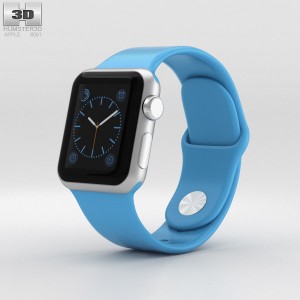
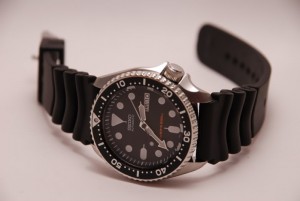
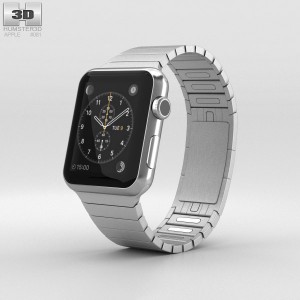
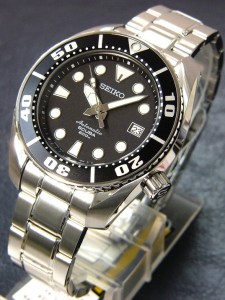

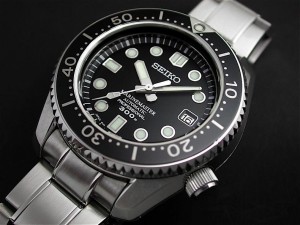
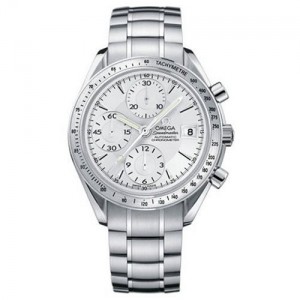
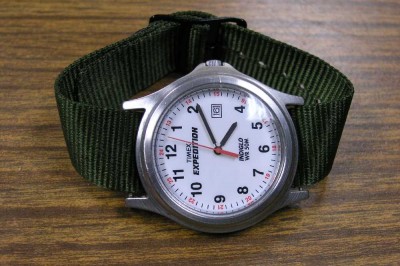
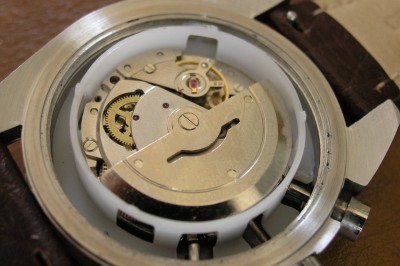
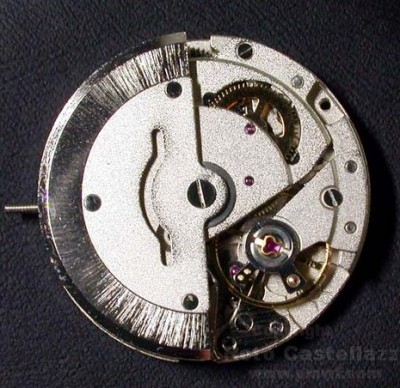
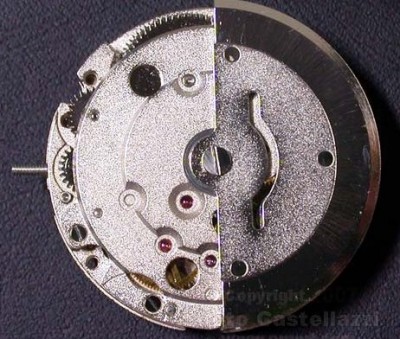
 Among the watches in Rolex’s current production, the Oyster Perpetual Explorer (Ref. 14270, but known popularly as “The Explorer 1”) stands in the lower-middle segment of the stainless steel line: a COSC certified center-seconds caliber 3000, without date, retailing for approximately $2,500. The Explorer is also, perhaps, the most historically connected model in the line, deriving from a long line of very similar Explorer designs. The watch is supplied in a 36 millimeter steel “Oyster” case, with an attached steel “Flip Lock” Oyster bracelet. The case is approximately 11.5 millimeters thick.
Among the watches in Rolex’s current production, the Oyster Perpetual Explorer (Ref. 14270, but known popularly as “The Explorer 1”) stands in the lower-middle segment of the stainless steel line: a COSC certified center-seconds caliber 3000, without date, retailing for approximately $2,500. The Explorer is also, perhaps, the most historically connected model in the line, deriving from a long line of very similar Explorer designs. The watch is supplied in a 36 millimeter steel “Oyster” case, with an attached steel “Flip Lock” Oyster bracelet. The case is approximately 11.5 millimeters thick. The relatively simple three piece case (bezel, band, and back) is clearly strong and rigid. (Rigidity is an important issue in maintaining water-resistance in use that involves impact that can distort the alignment of the case.) While the bezel and band sides (which are integral with the strap lugs) are polished, the upper horizontal surface of band and lugs is brushed. The brushing shows a slight unevenness on the case band, especially between the lugs and should be more consistent in a watch of this cost. The polished sides of the case, however, are an unusual, peculiarly appealing double-horn shape characteristic of many Rolexes, and are sumptuously polished so that the metal has almost the luster of white gold (right). The uncoated sapphire crystal, as can be seen, is set largely outside the bezel. The internal surfaces and backs of the lugs are not as well finished as the top and side surfaces, and even with the bracelet in place, the inside lower lug edges and tips are uncomfortably sharp (below left).
The relatively simple three piece case (bezel, band, and back) is clearly strong and rigid. (Rigidity is an important issue in maintaining water-resistance in use that involves impact that can distort the alignment of the case.) While the bezel and band sides (which are integral with the strap lugs) are polished, the upper horizontal surface of band and lugs is brushed. The brushing shows a slight unevenness on the case band, especially between the lugs and should be more consistent in a watch of this cost. The polished sides of the case, however, are an unusual, peculiarly appealing double-horn shape characteristic of many Rolexes, and are sumptuously polished so that the metal has almost the luster of white gold (right). The uncoated sapphire crystal, as can be seen, is set largely outside the bezel. The internal surfaces and backs of the lugs are not as well finished as the top and side surfaces, and even with the bracelet in place, the inside lower lug edges and tips are uncomfortably sharp (below left).  They should be slightly radiused to eliminate this unpleasant feel. The completely unadorned back is nicely brushed, and shows the familiar Rolex serrated wrench ring (yellow arrow, left).
They should be slightly radiused to eliminate this unpleasant feel. The completely unadorned back is nicely brushed, and shows the familiar Rolex serrated wrench ring (yellow arrow, left). slots, or hexagonal protrusions–are nearly impossible to use without some visible evidence left behind. To be properly used, however, the Rolex wrench and back must be perfectly parallel and stable, and this generally requires a true case opener, rather than a hand wrench. The Bergeon 5700 opener, as shown below left, clamps the watch firmly in a horizontal position between two rigid nylon
slots, or hexagonal protrusions–are nearly impossible to use without some visible evidence left behind. To be properly used, however, the Rolex wrench and back must be perfectly parallel and stable, and this generally requires a true case opener, rather than a hand wrench. The Bergeon 5700 opener, as shown below left, clamps the watch firmly in a horizontal position between two rigid nylon  blocks and allows the bit to be lowered onto the watch in perfect alignment. It is a shame that other manufacturers do not use similar designs. The design does not, however, lend itself to the use of hand wrenches with the watch improperly supported. The many scratched Rolex backs that watchmakers report are undoubtedly due to the use of unstable and poorly-aligned hand wrenches.
blocks and allows the bit to be lowered onto the watch in perfect alignment. It is a shame that other manufacturers do not use similar designs. The design does not, however, lend itself to the use of hand wrenches with the watch improperly supported. The many scratched Rolex backs that watchmakers report are undoubtedly due to the use of unstable and poorly-aligned hand wrenches. To my tastes, the markers and hands are oversized and give the dial a cramped and busy appearance. The flat, uncoated sapphire also causes strong reflections that add to the difficulty in easily reading the time. Taste aside, the dial and hands are detailed, extremely well made, and immaculately finished. I would imagine that, together, they represent a significant portion of the manufacturing costs of this watch.
To my tastes, the markers and hands are oversized and give the dial a cramped and busy appearance. The flat, uncoated sapphire also causes strong reflections that add to the difficulty in easily reading the time. Taste aside, the dial and hands are detailed, extremely well made, and immaculately finished. I would imagine that, together, they represent a significant portion of the manufacturing costs of this watch. For a watch that it is in some ways about its steel bracelet, it is remarkable that this bracelet looks so much like an after-thought. The beautiful case shape and lugs–which were clearly originally designed for use with a strap–are visually almost completely destroyed by the bracelet. Furthermore, the bracelet is not only unintegrated with the watch aesthetically, but physically as well. It is attached to the lugs with standard springs bars (as if it were a strap), and an “insert” is placed between bracelet and case to fill
For a watch that it is in some ways about its steel bracelet, it is remarkable that this bracelet looks so much like an after-thought. The beautiful case shape and lugs–which were clearly originally designed for use with a strap–are visually almost completely destroyed by the bracelet. Furthermore, the bracelet is not only unintegrated with the watch aesthetically, but physically as well. It is attached to the lugs with standard springs bars (as if it were a strap), and an “insert” is placed between bracelet and case to fill the space between the two. The insert hangs on the spring bar; two awkward (and exposed) tabs behind the lugs stabilize it. Despite the insert having a single purpose–to fill the space between the lugs–it does so very crudely, following neither the contour of the case, nor the lugs. The design and fit is as awkward and unattractive as anything I recall seeing on a production watch. The clasp for the bracelet is comprised of stamped steel pieces that feel cheap, and seem obviously inappropriate in a watch of this cost.
the space between the two. The insert hangs on the spring bar; two awkward (and exposed) tabs behind the lugs stabilize it. Despite the insert having a single purpose–to fill the space between the lugs–it does so very crudely, following neither the contour of the case, nor the lugs. The design and fit is as awkward and unattractive as anything I recall seeing on a production watch. The clasp for the bracelet is comprised of stamped steel pieces that feel cheap, and seem obviously inappropriate in a watch of this cost. The Explorer houses a Rolex caliber 3000, a 12.5 ligne (28.5 millimeter) 5.8 millimeter thick, 27 jewel, 28,8000 BPH automatic. Although the movement is largely conventional in design, there are a few unusual design features.
The Explorer houses a Rolex caliber 3000, a 12.5 ligne (28.5 millimeter) 5.8 millimeter thick, 27 jewel, 28,8000 BPH automatic. Although the movement is largely conventional in design, there are a few unusual design features. the upper PTFE-coated wheel can be seen inverted at the blue arrow, the inner-lower wheel at the yellow arrow. (The red arrow indicates the transmission wheel for hand winding.) Because both upper wheels rotate continuously during movement of the winding rotor in such a double click wheel system, the large size of the wheels may have dictated the light alloy to reduce their mass and thus improve winding efficiency. The alloy is probably also quieter in operation that steel parts would be. I do not know whether the PTFE coating provides the durability that conventionally lubricated steel parts would offer. The automatic winding system is the single best-finished part of the movement.
the upper PTFE-coated wheel can be seen inverted at the blue arrow, the inner-lower wheel at the yellow arrow. (The red arrow indicates the transmission wheel for hand winding.) Because both upper wheels rotate continuously during movement of the winding rotor in such a double click wheel system, the large size of the wheels may have dictated the light alloy to reduce their mass and thus improve winding efficiency. The alloy is probably also quieter in operation that steel parts would be. I do not know whether the PTFE coating provides the durability that conventionally lubricated steel parts would offer. The automatic winding system is the single best-finished part of the movement. A clever, efficient and cost-saving design solution is also seen in the mounting of the winding rotor shaft, illustrated at left. The top of third wheel jewel has an oddly shaped recess that supports the bottom pivot of the rotor shaft. Thus, a single jewel supports the third wheel from above and the rotor from below. A possible shortcoming in this arrangement might be that a significant shock to the watch would cause the considerable mass of the rotor to displace the friction-fit jewel and disturb the third wheel pinion end-play. The rotor shaft is secured to its mounting in the automatic winding bridge only by a circlip, and shows considerable side-play in operating position. I am told by
A clever, efficient and cost-saving design solution is also seen in the mounting of the winding rotor shaft, illustrated at left. The top of third wheel jewel has an oddly shaped recess that supports the bottom pivot of the rotor shaft. Thus, a single jewel supports the third wheel from above and the rotor from below. A possible shortcoming in this arrangement might be that a significant shock to the watch would cause the considerable mass of the rotor to displace the friction-fit jewel and disturb the third wheel pinion end-play. The rotor shaft is secured to its mounting in the automatic winding bridge only by a circlip, and shows considerable side-play in operating position. I am told by  Rolex service people that this is a not uncommon source of trouble in the otherwise sturdy winding system. The simplicity and over-sized design of the automatic winding system characterizes the entire caliber 3000. The well-finished rotor, inverted and attached to the winding bridge, is shown at right.
Rolex service people that this is a not uncommon source of trouble in the otherwise sturdy winding system. The simplicity and over-sized design of the automatic winding system characterizes the entire caliber 3000. The well-finished rotor, inverted and attached to the winding bridge, is shown at right. extremely simple solution to rate regulation that is also, undoubtedly, less expensive than a conventional regulator. By contrast, the conceptually similar Gyromax balance of Patek Philippe is a refined and expensive system with eight top-mounted rotating, slotted weights. Both systems offer the advantage of not introducing the adjustment complications of a regulator; but both also make simple rate adjustments a more complex and time-consuming task. The Patek system, however, makes screwdriver access (to rotate the weights) from above an easy matter. The Rolex system relies on rotation of the serrated screw heads from the side, presumably with a screwdriver blade, unless the balance is removed from the watch (in which case a special “star” wrench could be used). Judging by the significant damage on all four screws (due to adjustment at the factory), this is not an easy task, at least if it is to be accomplished without damage. (Enough metal had been gouged from the screw heads in this movement that balance poise may well have been affected, damage that would not necessarily appear in the timing figures, but might make future timing adjustments more difficult.) This photograph also illustrates the KIF shock protection for the escape wheel (blue arrow).
extremely simple solution to rate regulation that is also, undoubtedly, less expensive than a conventional regulator. By contrast, the conceptually similar Gyromax balance of Patek Philippe is a refined and expensive system with eight top-mounted rotating, slotted weights. Both systems offer the advantage of not introducing the adjustment complications of a regulator; but both also make simple rate adjustments a more complex and time-consuming task. The Patek system, however, makes screwdriver access (to rotate the weights) from above an easy matter. The Rolex system relies on rotation of the serrated screw heads from the side, presumably with a screwdriver blade, unless the balance is removed from the watch (in which case a special “star” wrench could be used). Judging by the significant damage on all four screws (due to adjustment at the factory), this is not an easy task, at least if it is to be accomplished without damage. (Enough metal had been gouged from the screw heads in this movement that balance poise may well have been affected, damage that would not necessarily appear in the timing figures, but might make future timing adjustments more difficult.) This photograph also illustrates the KIF shock protection for the escape wheel (blue arrow). Assuming a lift angle of 52 degrees (Rolex Service in New York would not supply me with this figure which cannot be readily determined from the watch itself), the amplitude was more than adequate, though not exceptional: 294 degrees in horizontal positions, and 244 to 259 in the various vertical positions. Very fine, well-serviced watches usually provide 310 degrees or better in horizontal positions, 260 or better in vertical positions. Amplitude is a measure of the total efficiency of the movement, and good amplitude is essential to positional adjustments and rating.
Assuming a lift angle of 52 degrees (Rolex Service in New York would not supply me with this figure which cannot be readily determined from the watch itself), the amplitude was more than adequate, though not exceptional: 294 degrees in horizontal positions, and 244 to 259 in the various vertical positions. Very fine, well-serviced watches usually provide 310 degrees or better in horizontal positions, 260 or better in vertical positions. Amplitude is a measure of the total efficiency of the movement, and good amplitude is essential to positional adjustments and rating. Beat error fell between zero and 0.3 milliseconds in the various positions, a good performance. Unfortunately, the lowest beat errors were adjusted into the least critical positions, crown up and crown right (both zero). This put the dial up position at 0.2 and the crown down position at 0.3 milliseconds error, positions in which one would normally seek the least error. My only other concern about timer performance is in the intermittent beat error indicated at the blue arrows and inset in the tape illustrated above. While slight variations in beat (in any given position) are almost always apparent in most watches, the error in this watch was an almost perfectly regular, rhythmic error that suggests an irregularity in the escape wheel–possibly an out-of-round condition or a damaged or malformed tooth. Without counting escape wheel teeth (there are more than the usual 15) and timer ticks, I could not be sure of this relationship.
Beat error fell between zero and 0.3 milliseconds in the various positions, a good performance. Unfortunately, the lowest beat errors were adjusted into the least critical positions, crown up and crown right (both zero). This put the dial up position at 0.2 and the crown down position at 0.3 milliseconds error, positions in which one would normally seek the least error. My only other concern about timer performance is in the intermittent beat error indicated at the blue arrows and inset in the tape illustrated above. While slight variations in beat (in any given position) are almost always apparent in most watches, the error in this watch was an almost perfectly regular, rhythmic error that suggests an irregularity in the escape wheel–possibly an out-of-round condition or a damaged or malformed tooth. Without counting escape wheel teeth (there are more than the usual 15) and timer ticks, I could not be sure of this relationship. The timer performance of this caliber 3000 is noteworthy not only for the excellent figures but for the fact that such figures are possible from a movement in the poor condition that this movement was in. The caliber 3000 is obviously engineered for minimum parts count, easy assembly, and economy of manufacture and service. It is an extremely simple movement by design and I imagine that it could be produced in a workman-like way at a cost equal to or below that of some of the most inexpensive automatic movements in current production. As the simplicity of the movement also makes–or ought to make–some contribution to reliability and reduced routine service costs, there is certainly nothing wrong with such a design in an appropriately priced wristwatch. The price of this watch–and the Rolex reputation– left me entirely unprepared for the number of shortcuts that had been taken in the actual production of this movement.
The timer performance of this caliber 3000 is noteworthy not only for the excellent figures but for the fact that such figures are possible from a movement in the poor condition that this movement was in. The caliber 3000 is obviously engineered for minimum parts count, easy assembly, and economy of manufacture and service. It is an extremely simple movement by design and I imagine that it could be produced in a workman-like way at a cost equal to or below that of some of the most inexpensive automatic movements in current production. As the simplicity of the movement also makes–or ought to make–some contribution to reliability and reduced routine service costs, there is certainly nothing wrong with such a design in an appropriately priced wristwatch. The price of this watch–and the Rolex reputation– left me entirely unprepared for the number of shortcuts that had been taken in the actual production of this movement.
 As illustrated at right, both friction-set click wheel jewels in the automatic winding bridge (and many others in the movement) are inserted in holes with completely unfinished edges. Not only are the holes unchamfered, but machining debris remained attached to the edge of hole. As a result, when the jewels were inserted in the holes, they pushed debris in front of them, some of which later fell onto the train wheel bridge below, and the wheel pivots located there; some debris also remained on top of the winding jewels, as illustrated below right. The illustration left shows the purely pragmatic and unadorned finish around the jewel hole of an IWC caliber 884, and suggests how minimum standards of workmanship in such matters should look.
As illustrated at right, both friction-set click wheel jewels in the automatic winding bridge (and many others in the movement) are inserted in holes with completely unfinished edges. Not only are the holes unchamfered, but machining debris remained attached to the edge of hole. As a result, when the jewels were inserted in the holes, they pushed debris in front of them, some of which later fell onto the train wheel bridge below, and the wheel pivots located there; some debris also remained on top of the winding jewels, as illustrated below right. The illustration left shows the purely pragmatic and unadorned finish around the jewel hole of an IWC caliber 884, and suggests how minimum standards of workmanship in such matters should look.
 Clearly such machining residue acts as an abrasive in a watch movement and is unacceptable in a watch of any cost. Unfortunately, contamination with brass shavings and dust was found in several locations in the watch. One bridge screw, though polished on the (visible) top surface, was so roughly finished on the underside of the head, that it gouged the plate when installed for the first time at the factory (left). The blue arrows indicate gouges in the plate, the red arrow a curl of brass that was cut up from the plate and crushed under the screw head on installation.
Clearly such machining residue acts as an abrasive in a watch movement and is unacceptable in a watch of any cost. Unfortunately, contamination with brass shavings and dust was found in several locations in the watch. One bridge screw, though polished on the (visible) top surface, was so roughly finished on the underside of the head, that it gouged the plate when installed for the first time at the factory (left). The blue arrows indicate gouges in the plate, the red arrow a curl of brass that was cut up from the plate and crushed under the screw head on installation.
 A handful of the many other quality failures apparent in the movement are illustrated. These include a very roughly finished balance wheel and gouged Microstella screws at all four positions (A); sloppy oiling throughout much of the movement (B); the mostly crudely finished escape wheel I have ever personally seen in a watch (C); a rough fourth wheel with straight-cut teeth (D) (instead of the more expensive epicycloidal teeth expected in any watch of even reasonable quality); and rough edges with excess metal throughout the main plate (E). The few attempts at surface decoration seems ridiculous in this context, and these attempts are, unfortunately, as badly
A handful of the many other quality failures apparent in the movement are illustrated. These include a very roughly finished balance wheel and gouged Microstella screws at all four positions (A); sloppy oiling throughout much of the movement (B); the mostly crudely finished escape wheel I have ever personally seen in a watch (C); a rough fourth wheel with straight-cut teeth (D) (instead of the more expensive epicycloidal teeth expected in any watch of even reasonable quality); and rough edges with excess metal throughout the main plate (E). The few attempts at surface decoration seems ridiculous in this context, and these attempts are, unfortunately, as badly  executed as the rest of the movement. These include perlage applied over a very rough surface on the top of the balance cock, which is otherwise unedged and unfinished (F); and a brushed surface on the upper plate which abruptly ends where it is covered by the automatic winding bridge (G). Peculiarly, perlage is also applied to a few isolated strips of the mainplate visible alongside the winding bridge (H).
executed as the rest of the movement. These include perlage applied over a very rough surface on the top of the balance cock, which is otherwise unedged and unfinished (F); and a brushed surface on the upper plate which abruptly ends where it is covered by the automatic winding bridge (G). Peculiarly, perlage is also applied to a few isolated strips of the mainplate visible alongside the winding bridge (H).  Such pretensions to “fine finishing” seem ridiculous–or merely cynical–when so badly applied to a movement of such poor basic quality. The money would have been better spent on pragmatic finishing that eliminated contamination inside the movement and other very basic work that raised the movement to an acceptable minimum level of functional workmanship. As it stands, this caliber 3000 is the most crudely finished watch movement that I have ever personally examined; and I include in that observation, a number of movements in extremely inexpensive watches.
Such pretensions to “fine finishing” seem ridiculous–or merely cynical–when so badly applied to a movement of such poor basic quality. The money would have been better spent on pragmatic finishing that eliminated contamination inside the movement and other very basic work that raised the movement to an acceptable minimum level of functional workmanship. As it stands, this caliber 3000 is the most crudely finished watch movement that I have ever personally examined; and I include in that observation, a number of movements in extremely inexpensive watches.



 think it would be difficult to find another current production watch, at any price over a few hundred dollars, as deficient in basic workmanship of the mechanicals as the Explorer.
think it would be difficult to find another current production watch, at any price over a few hundred dollars, as deficient in basic workmanship of the mechanicals as the Explorer.










































